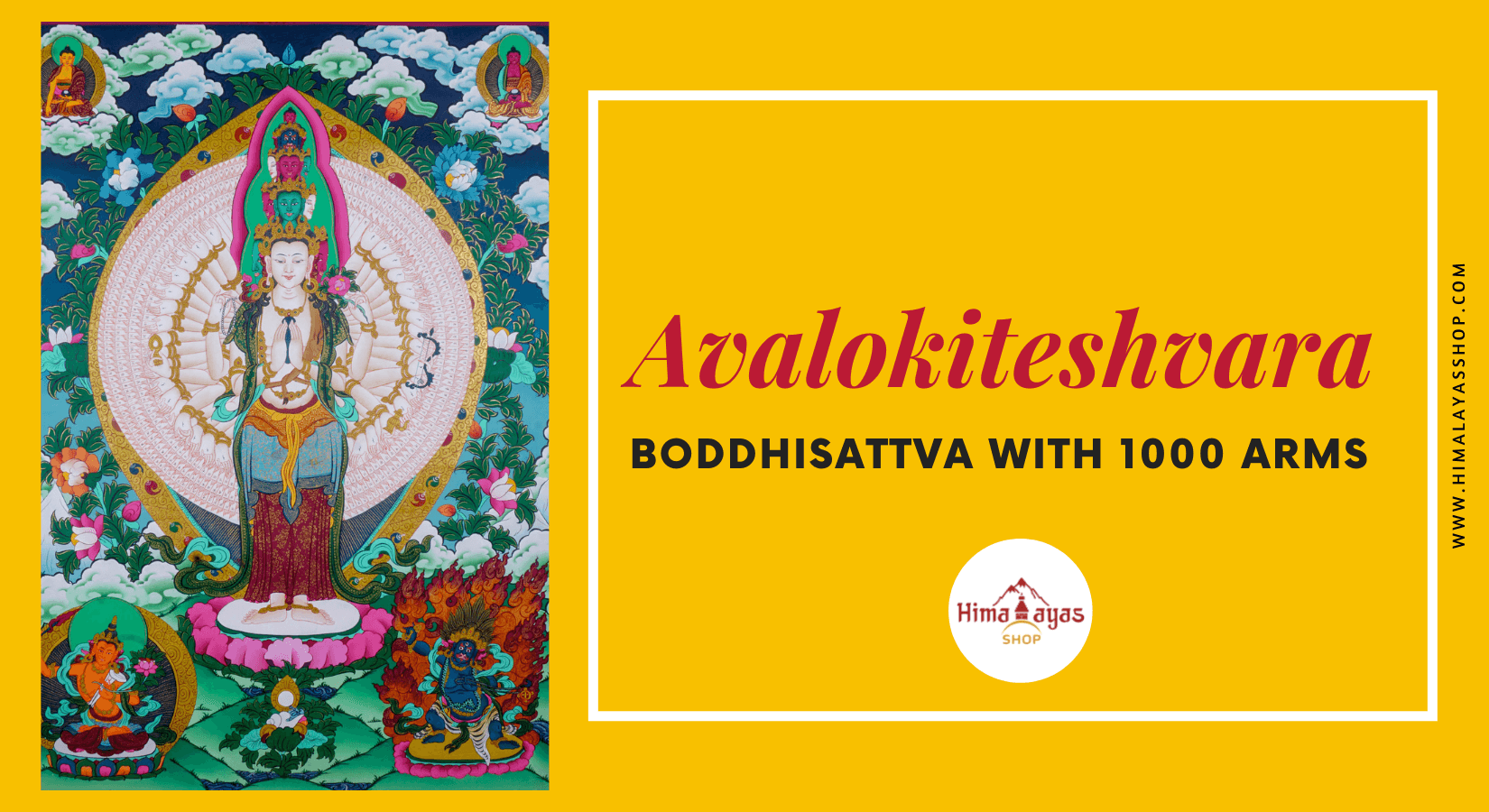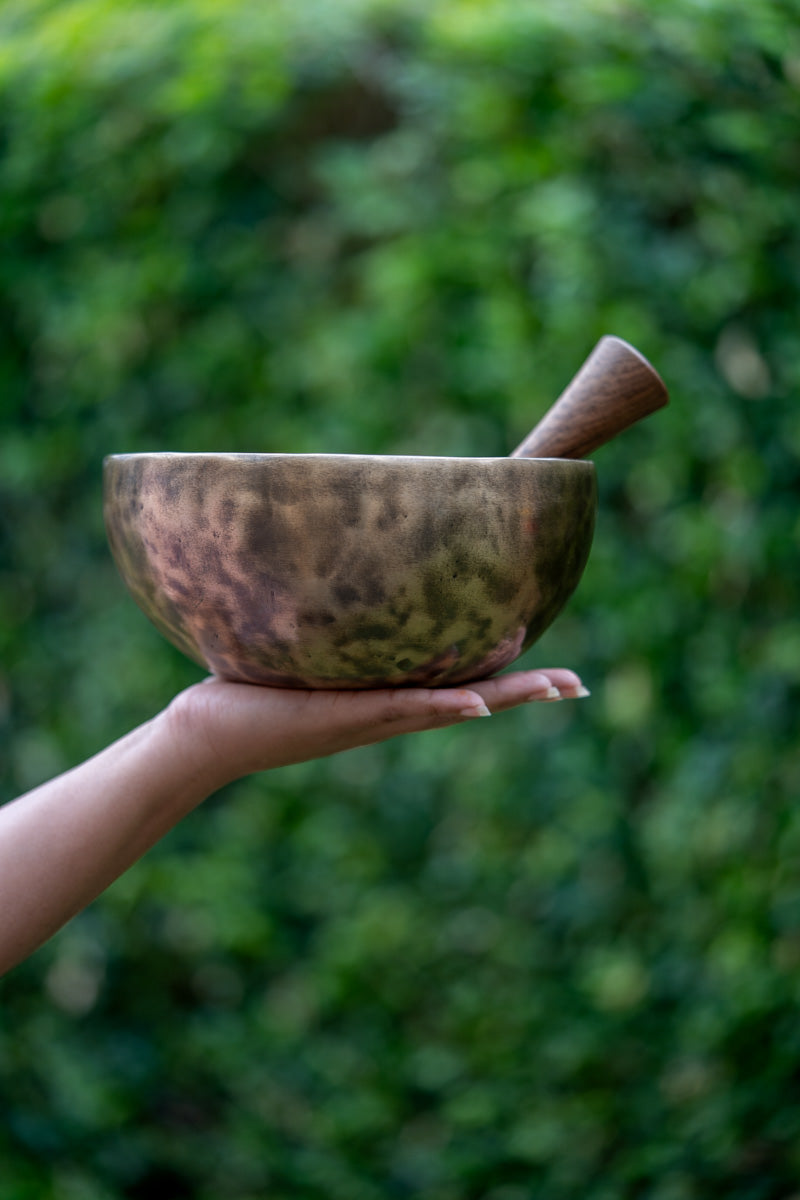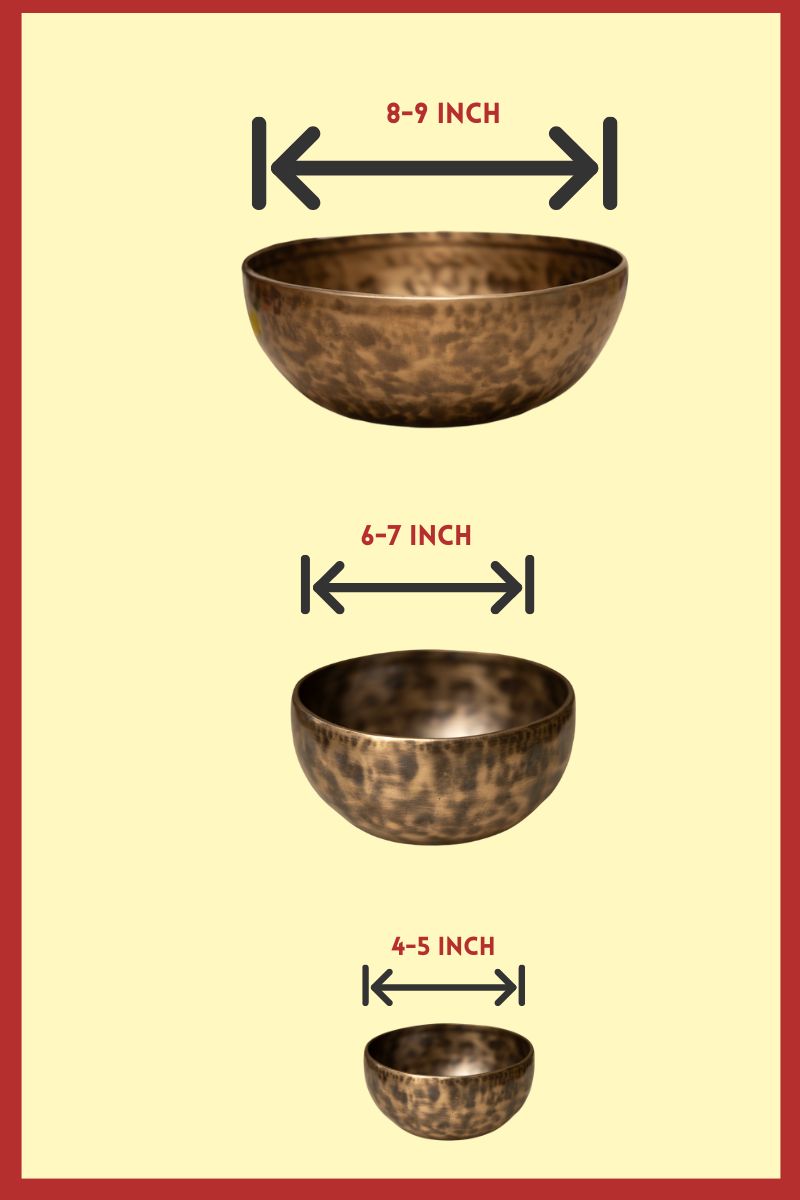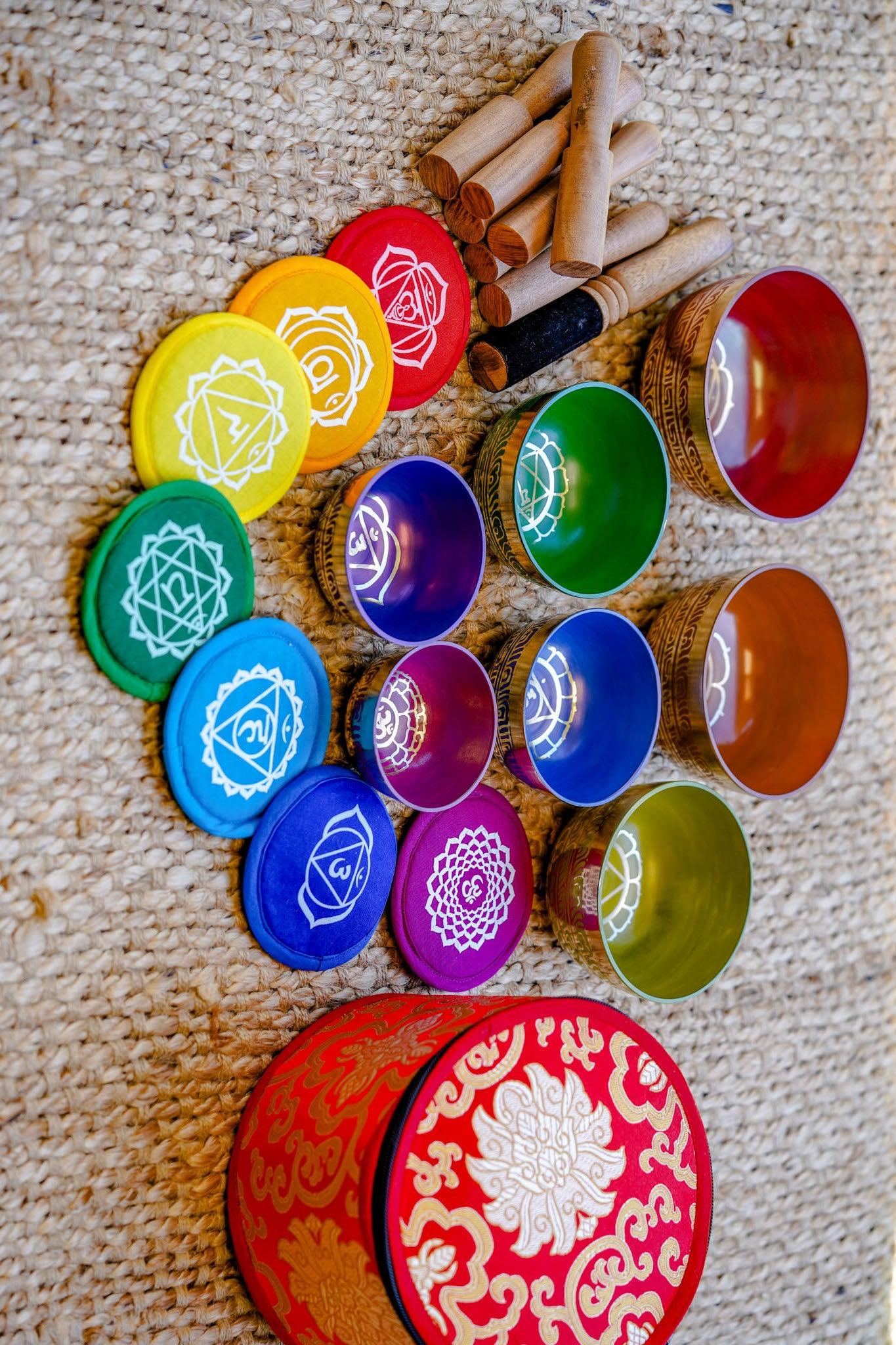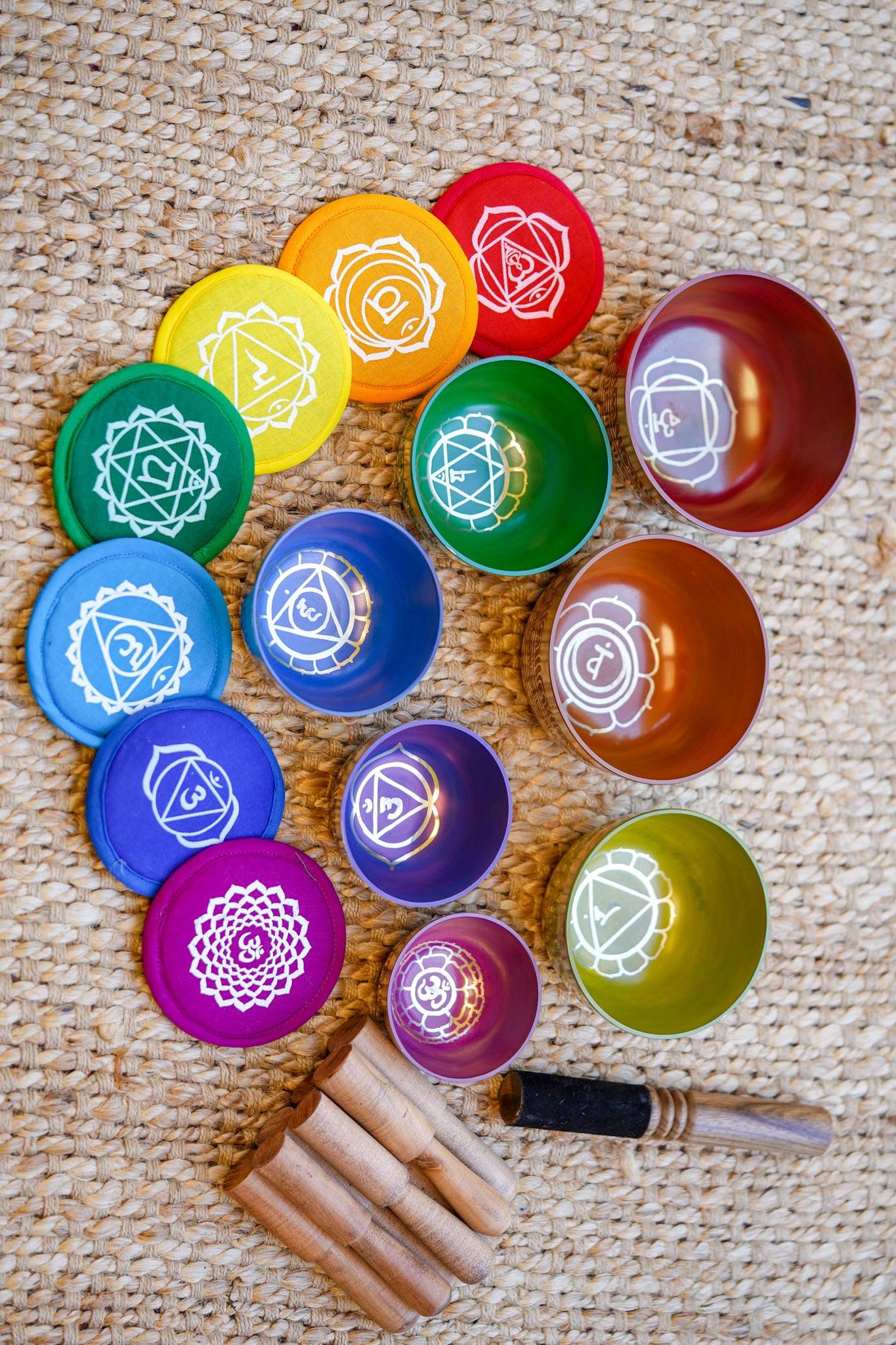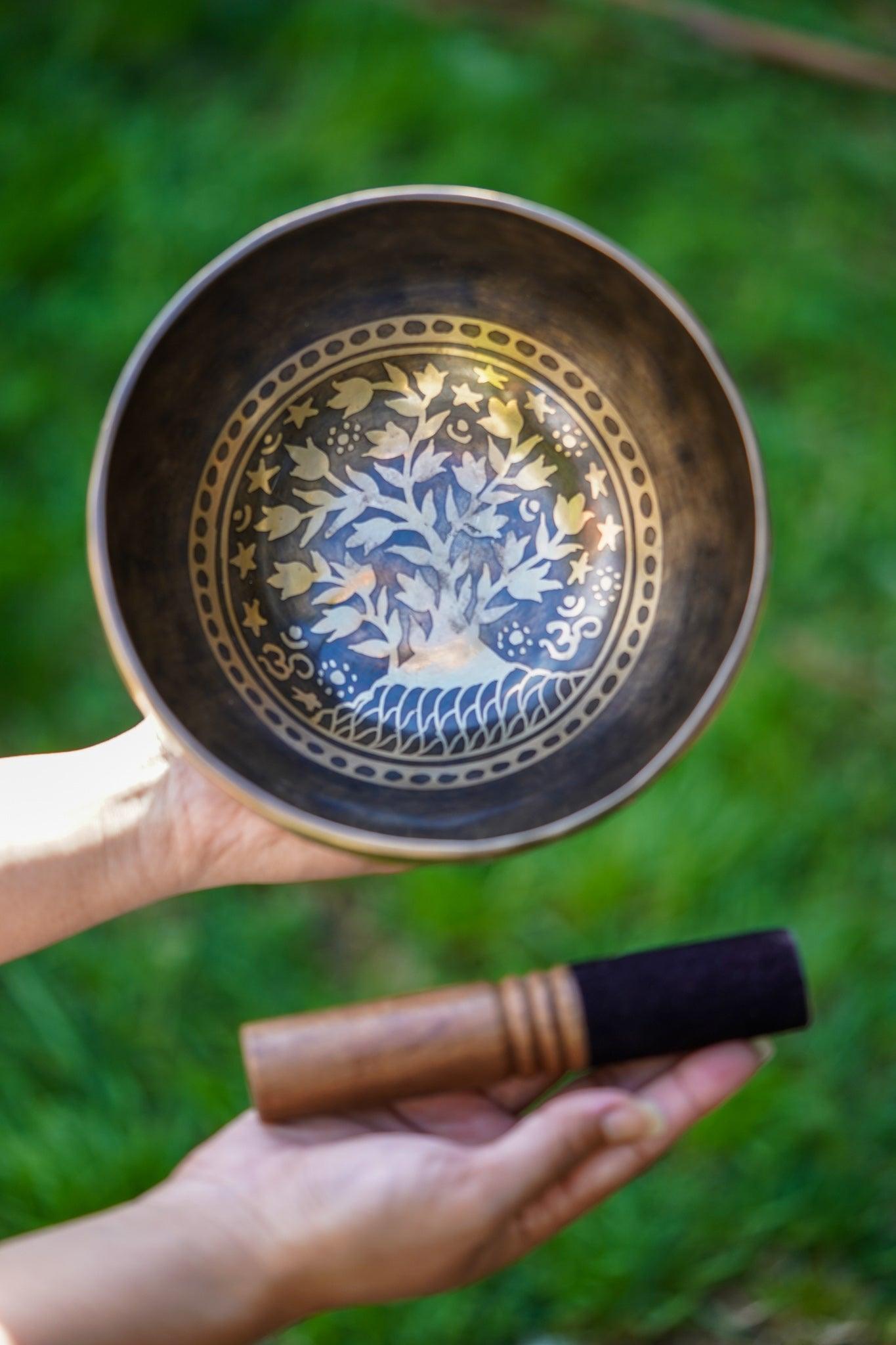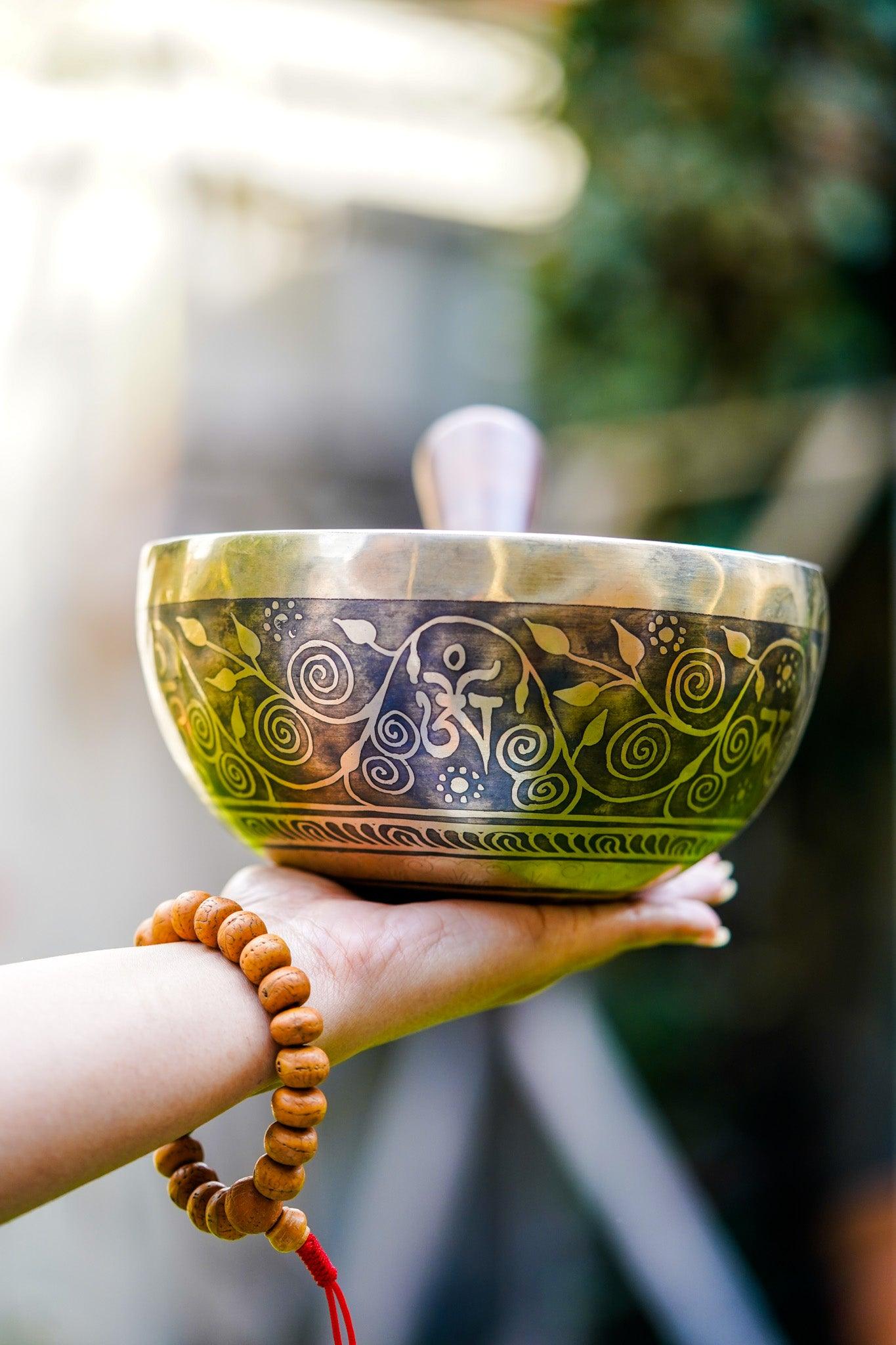Avalokitesvara has many forms : Chengrezig as the father form, Guanyin as mother and Mahakala as the warrior. He is known in different places and culture by various names. No matter what name he is called upon, his every form inspires compassion.
Multiple Names of Chenrezig or Avalokiteshvara
He has many names in various countries, the most renowned is Avalokitesvara (Sanskrit: avalokita, “looking on”; ishivara, “lord”), he is a Bodhisattva (Buddha to be) and is believed the one who embodies infinite compassion and mercy. In Tibet he is known as Chengresi, in Nepal he is known as Seto Machindranath (White Machindranath), in Korea as Gwanseum, in Vietnam as Quan Am, in Sri Lanka as Natha Deviyo, in Myanmar as Lokanatha, in Thailand and Cambodia as Lokesvara and in China, Taiwan and other Chinese sub communities he is worshipped as a female figure known as Guayin or Kannon. No matter the name he has and the representation he holds, we can say he is the most beloved Bodhisattva in entire Buddhism.
Avalokitesvara in Buddhist Philosophy
If go deep down the philosophy of Buddhism, we can see it is philosophically divided into three accounts namely Theravada Buddhism, Mahayana Buddhism, and a modern Buddhism.
The Theravada Buddhism is older and also the more conservative of the two main divisions of Buddhism and is usually remarked because the ‘traditions of the elders. According to this philosophy, people should follow the Noble Eight Path and become enlightened and free oneself form the vicious cycle of rebirth and place themselves in Nirvana.
In contrast of Theravada Buddhism, Mahayana Buddhists believes they can achieve enlightenment through the teachings of the Buddha. The goal of a Mahayana Buddhist may be to become a Bodhisattva but not Buddha and this can be achieved through the Six Perfections (generosity, patience, morality, energy, meditation and wisdom). Compassion is very important in Mahayana Buddhism. Therefore, Bodhisattvas choose to stay in the cycle of samsara (cycle of rebirth) to help others to achieve enlightenment as well as themselves.
The key difference between these two Buddhism philosophies is Theravada Buddhists strive to become enlightened and gain freedom from the cycle of samsara and Mahayana Buddhists choose to stay within the cycle of samsara out of compassion for others.
No matter which idealism of Buddhist you flow, Avalokitsevara has always placed at the centre of Bodhisattva in both the beliefs. According to Kaeandavyuha Sutra of Mahayana Buddhism, it is believed that the sun and moon are born form the eye of Avalokitsevara, Shiva from his brow, Brahma from his shoulder, Vishnu from his heart Sarswati form his teeth, earth from his feet, wind from his mouth and sky from stomach. These gods and goddess are the main gods of Hinduism. As per Lotus Sutra, it is believed that the Avalokitsevara is a compassionate bodhisattva who hears the cries of sentiment beings and works tirelessly to help those who call upon his name.
Theravada Buddhism is mainly found in the countries like Myanmar, Thailand, Sri Lanka, Laos and Cambodia and only Mahayana Bodhisattva that is worshipped here is Avalokitsevara. He might have many names as we move form one country to another but we can see he is loved and worshipped in entire Buddhist communities.
Avalokiteshvara in Various Countries
For thousands of years, Bodhisattva Avalokiteshvara has manifested the quality of compassion in Mahayana Buddhism. He is a great a being who has continually manifested the aspiration to achieve enlightenment—or complete liberation from suffering—and constantly endeavour for the sake of all, proving he (or for some followers, she) is one of the most important figure in the Buddhism. He is portraited, worshipped and have given name differently in various. Here we are going to tell you his presence in various countries.
Avalokiteshvara in Nepal
Starting with Nepal, where the Gautam Buddha was born. Although the Lord Buddha was born in Nepal, if we turn the pages of history, we can see the influence of Buddhism came later in Nepal. Being in between Tibet where Buddhism is main religion and India where Hinduism is followed by vast majority, the culture and practice of Nepal seems to look like a merger of both. From the past, Nepal has always been an ethnically and religiously diverse country. Buddhism and Hinduism have coexisted there for over two thousand years.
Surrounded by rugged mountains, located at an important intermediary point between the centres of Indian Buddhism and Tibet, Nepal has for centuries produced exquisitely beautiful paintings and sculptures, notably those in cast metal statues. Mainly the Newari community of Kathmandu valley has been directly involved in the creation of these arts and artifacts. Talking about Avalokitshvara, Avalokiteshvara has been a favourite Nepalese subject from the time of the Licchavi rulers ( 300–879AD), particularly in his form as Padmapani Lokeshvara. The multi-armed Amoghapasha Lokeshvara (Lord of the Unfailing Noose) is also worshipped in Nepal. Amoghapasha’s iconography includes the same figures who attend Khasarpana Lokeshvara like —Tara, Bhrikuti, Sudhanakumara, and Hayagriva.
In Nepalese Thangka painting, Amoghapasha Lokeshvara holds many other attributes in addition to the familiar lotus, prayer beads, vase, manuscript, and trident. He carries the rope (also known as pasha in Sanskrit) that gives the name this form of Avalokiteshvara. The most popular form of Amoghapasha that is been worshipped worship in Nepal is Ashtamivrata, which involves venerating images of this deity.
Avalokiteshvara in India
India where Gautam Buddha got enlightened holds one of the major holy sites for Buddhists. The Bodhi tree in Bodhgaya is the center from where the Buddhism and the teaching of Buddha was spread all over the world. If we go deep into the history, Buddhism and its teaching was spread much later in India, and the arts and artifacts related to Buddhism seems to be influenced by yoga and yogic postures. India was pre dominated by the three major religion the Hinduism, Jainism, and Buddhism and most of the Indian arts and crafts share iconic graph of these three religions. These related traditions show cross-legged deities sitting in yogic postures, such as the lotus position (Padmasana), and with similar costumes, ornaments, hand gestures (mudras) and attributes (objects that identify figures.
Indian art and sculpture regarding Bodhisattva rose when the Gupta Empire came into Power. During the Gupta period, many important bodhisattva iconographies was developed by artists, painter and sculptors so that it could be easier to identify them individually. Avalokiteshvara’s Indian iconography usually specifies that he holds a white lotus, smiles benevolently, wears lavish ornaments and silk garments, and often displays the attributes of vase and antelope skin.
In 3rd–5th century Gandhara (present-day Pakistan), artists portrayed bodhisattvas as princes, with elaborate robes and heavy jewelry. In same era, the Kashmiri artists began to visualize bodhisattvas as a supreme role of spiritual seeker and began to paint a buddha seated in meditation posture.
To summarize, the early Indian art has shown buddhas wear monastic robes, while bodhisattvas resemble royalty or ascetics in dress and bearing. But all buddhas and bodhisattvas embody the same ideal of compassion, a key attribute of the awakened mind.
Avalokiteshvara in Tibet
No country holds a greater alliance with Avalokiteshvara than Tibet. Religious leader like Dalai Lama and heads of Karma Kagyu lineage, the Gyalwang Karmapas, are considered his emanations.
Tibetans prays Avalokiteshvara as Chenrezig or as a Supreme Compassion. The name Chenrezig expresses his nature; each syllable that composes it in Tibetan has a meaning: chen means eye; re gives the idea of continuity; zig means to look. Therefore, Chenrezig is the one who ‘continually looks upon all beings with the eye of compassion.
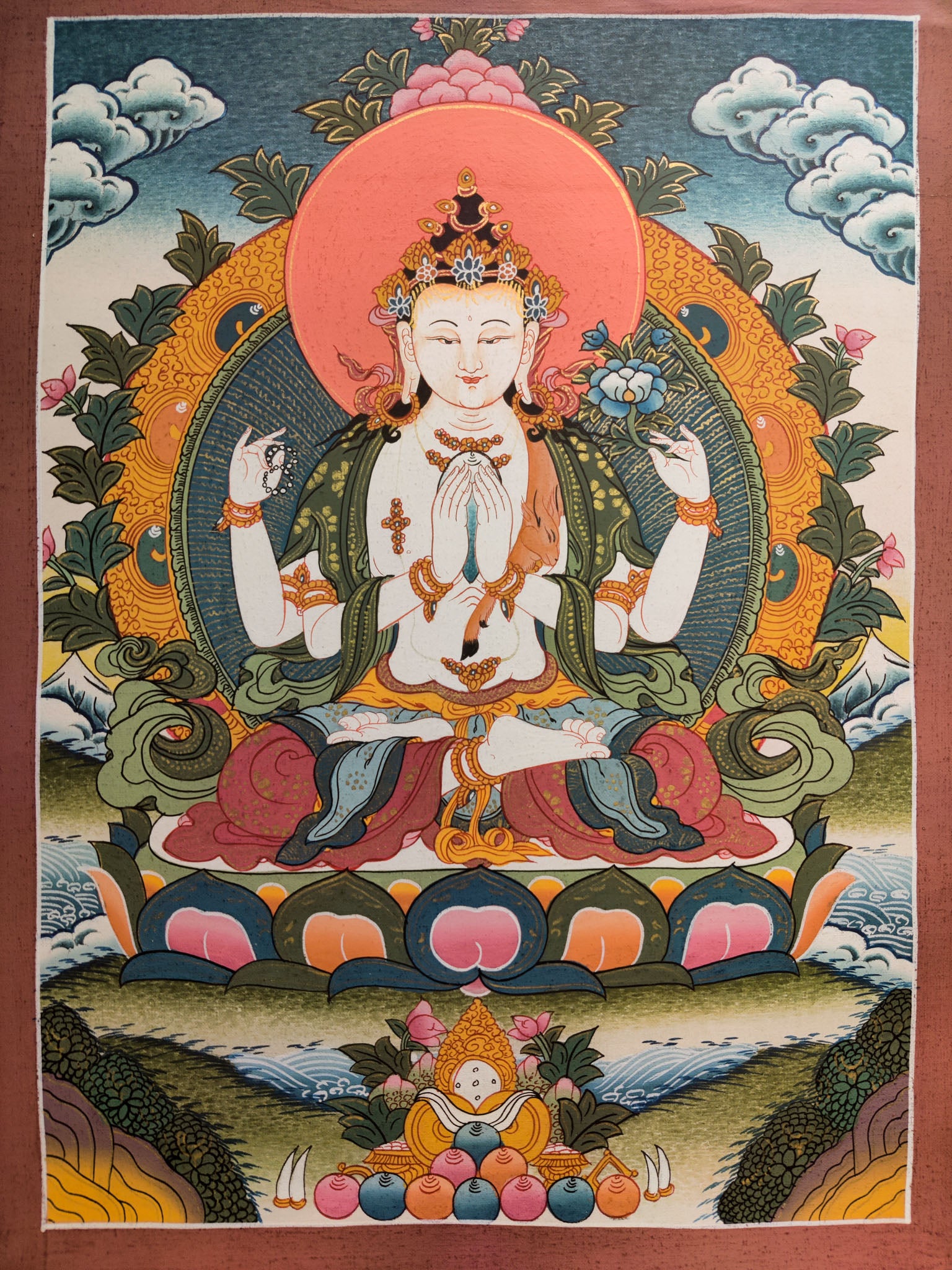
According to Buddhist legends Amitabha Buddha gave birth to Avalokiteshvara in a burst of light, resembling their relationship as a father and a son. Being the god of compassion, he looks and has taken vow to free all sentiment being from suffering. Seeing the innumerable suffering of living sentiments, a tear dropped from each of his eyes. From the bodhisattva’s tears, two female deities were born: Green Tara from the right eye and White Tara from the left.
According to history book, Tibetan Buddhism came to the country as early as the 4th century and gained greater prominence during the imperial era of King Songtsen Gampo. King Gampo patronizing as the result of his marriage with two Buddhist princess one from Nepal, The Bhirkuti and one from China, Wencheng. These marriage and exchange of cultures resulted in the establishment of important religious sites like the Great temples of Lhasa. The Phagpa Lokeshvara chapel is one of the oldest chapel in Potala Palace dating back to Songtsen Gampo’s time, and in this chapel contains a carved red sandal wood of Arya Avalokiteshvara, which is believed to be one of the four discovered carving in Nepal during the 7th century.
When a sandalwood tree split open miraculously and four “brother” statues of the deity appeared. Out of which two of stayed in Nepal and Phagpa Lokeshvara was sent to the Potala Palace. This statue is approximately three-foot tall. Tibetans consider this icon of Avalokiteshvara as one of the most sacred in the Potala, indeed in all of Lhasa.
The Avalokiteshvara is depicted in many forms in Tibet, the most famous being four-armed Avalokiteshvara and the Mantra “Om Mani Padme Hum”. The another is the Eleven-headed Mahakarunika in the Jokhang, and Phagpa Lokeshvara (Noble Lord of the World) in the Potala Palace. The heads represent his 11 principal virtues (including non-attachment, non-violence, and faith), which he uses to conquer the 11 desires that obstruct the path to enlightenment. Avalokiteshvara’s 1,000 arms symbolize his great compassion to save all sentiment beings and lead them toward enlightenment. The central pair of arms is shown in a gesture of prayer, and the outer arms hold many different attributes, including weapons that represent the various ways in which he can offer help to his followers. The hands are often adorned with eyes that signify his omniscience and ability to see in all directions to identify suffering. To Vajrayana Buddhists, Avalokiteshvara (or Chenrezig), has particular significance in all of his forms and is considered the patron deity of Tibet, watching over the Land of the Snows. His Holiness the Dalai Lama is believed to be an incarnation of this bodhisattva and, as such, a living symbol of infinite compassion.
Avalokiteshvara in China
In China, Avalokiteshvata is known as Guanyin or Guanshiyin, a bodhisattva who perceives the sound of the World. The meaning of his Chinese name is “the ability to see sounds. Guan can also refer to “the ‘seeing’ of the true nature of existence.” The Chinese bestowed many other names on Avalokiteshvara that highlight both his kindness and wisdom, such as Great Compassion and Master Perceiver. In China, he was given a female identity, and new forms.

Unlike India, China had no God as a creator, they viewed entire universe as continuously changing environment with human and nature as interdependent on each other but had rich multi ethnic culture and language, written fonts. The introduction of Buddhism into China was initially diffuse and rather haphazard, without imperial (royal families) or elite support. Many rulers supported it and it was this support from elites that Buddhism became 3rd major Chinese religion after Daoism and Confucianism.
Chinese learned about Avalokiteshvara during 3rd century when the Lotus Sutra was translated in their mother tongue. The twenty-fifth chapter, called “The Universal Gateway of the Bodhisattva Perceiver of the World’s Sounds,” describes many ways Avalokiteshvara saves beings from peril when death seems certain or grants boons that seem otherwise unobtainable. Invoking his name with sincerity brings Guanyin to the rescue, and numerous “miracle tales” testify to the efficacy of this practice.
During 6th- 7th century , Buddhism was maturing in China, the spiritual and iconographic development was going on related to buddhas and bodhisattva. During this period the pure land Buddhism was developing and later spread to Korea and Japan. The bodhisattvas Amitabha Buddha and Avalokiteshvara played a major role on pure land.
Avalokiteshvara in Japan
Avalokiteshvara is known as Kannon in Japan. If we look back to history of Buddhism has passed from China to Korea in 4th Century and then later introduced to Japan. Avalokiteshvara was worshipped in a mediated fashion. The most famous form of Kannon in Japan has 11 faces and wears a flowing robe. Kannon or Avalokiteshavara is most common figure in Japan, unlike its counter partner in India which is male, Kannon is worshipped as female in Japan. Few other Japanese name for her is Kannon – Sama or Kanzeon Bosatsu.

Even in Japan, Kannon is worshipped as Bodhisattva not as Buddha, a being who can achieve Nirvana, but has delayed to achieve it until and unless all the living sentiment are free form suffering. Kannon has many temples and Izumo 33 Kannon Pilgrimage being the most sacred and popular.

